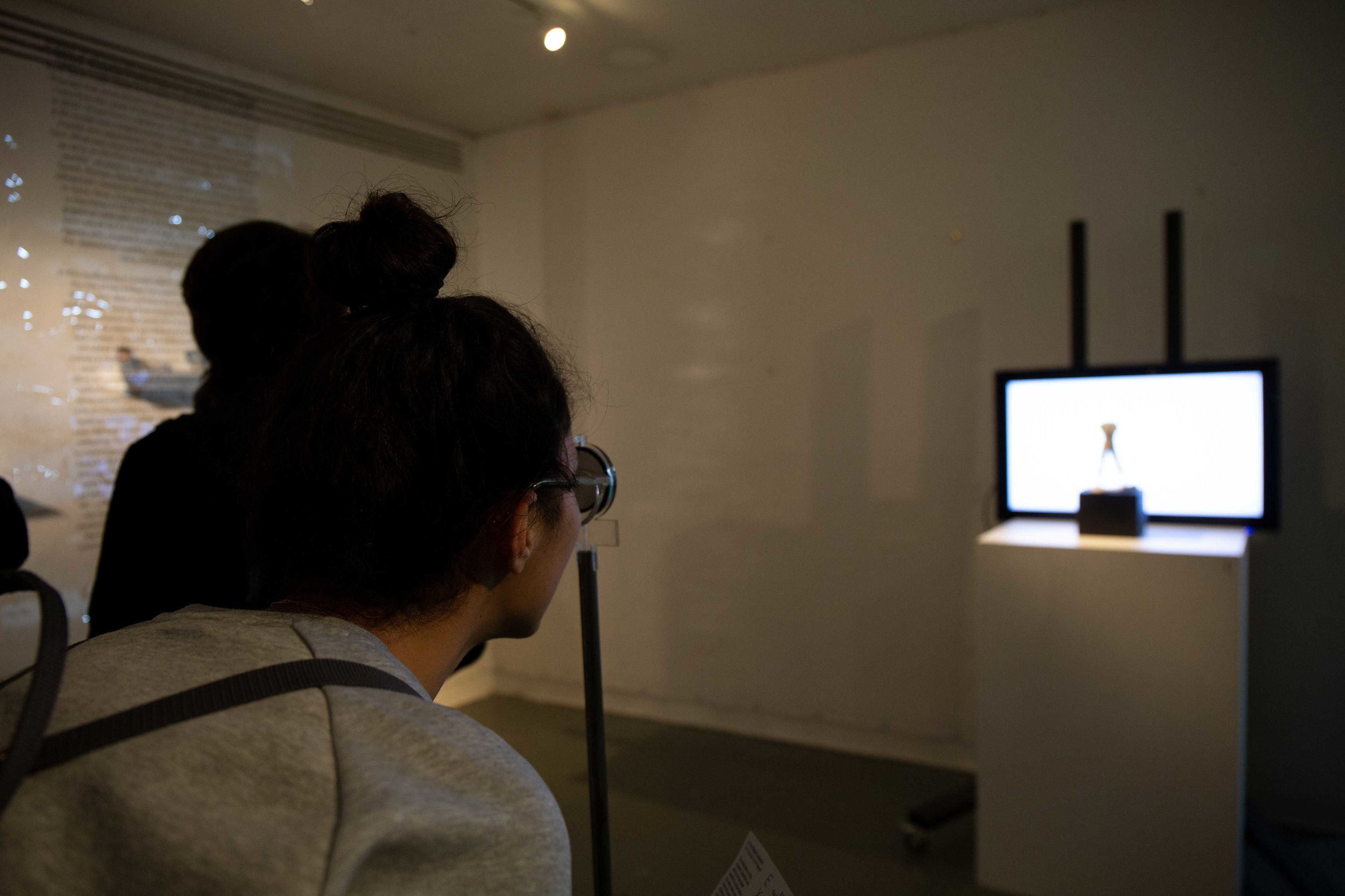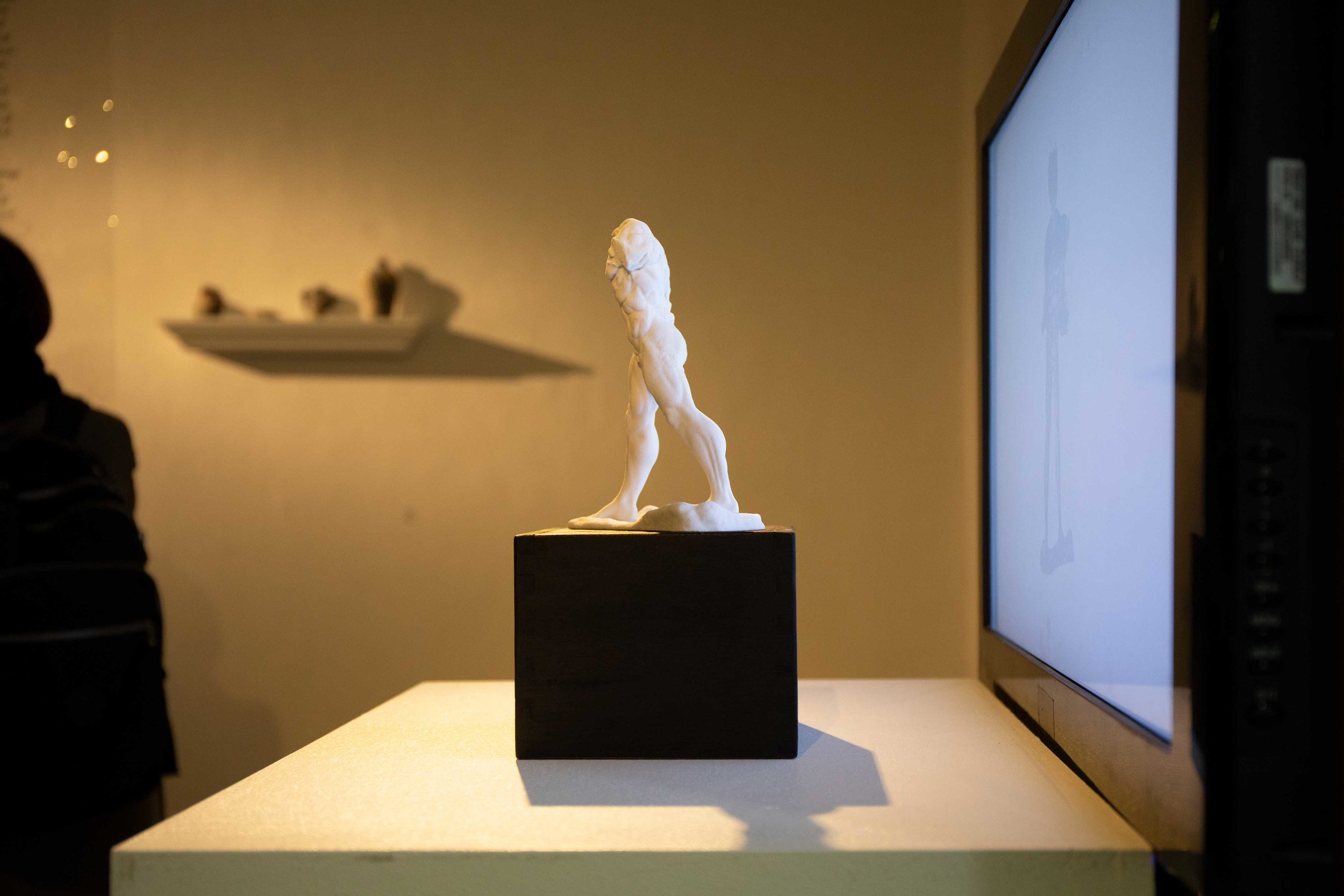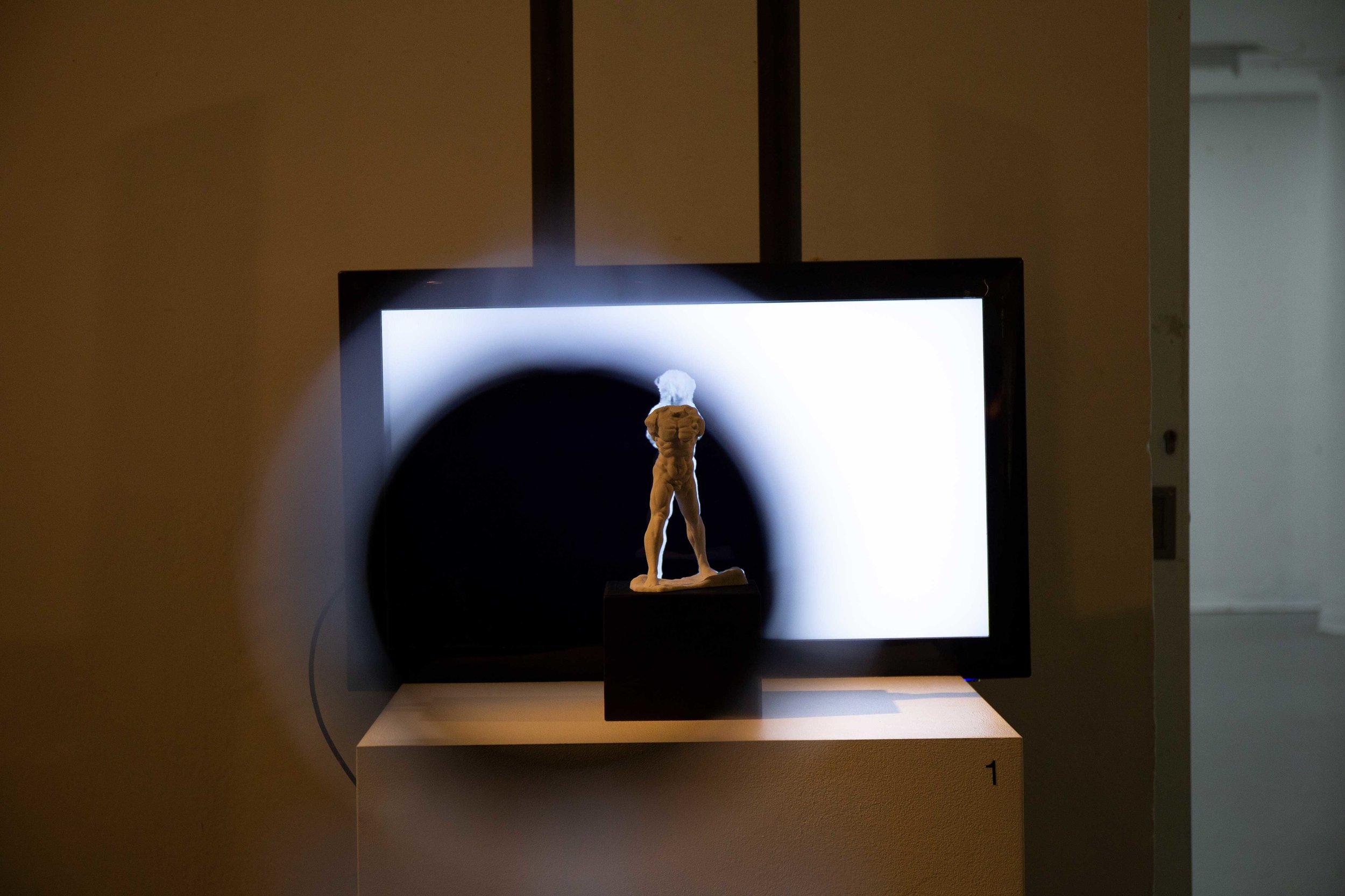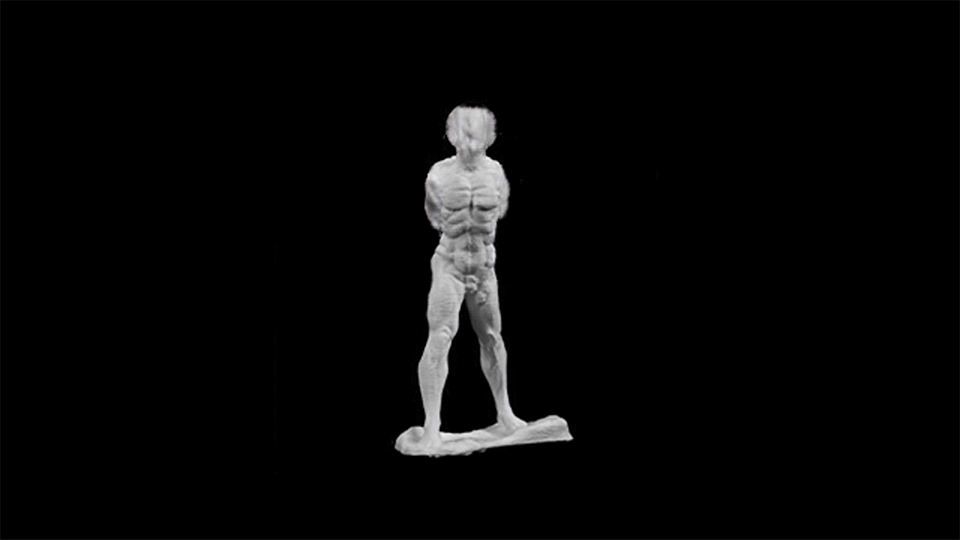We cannot affirm that there is and can be nothing more profane than a mutilated, defaced reproduction. It is by no means out of the question that eventually, a still more radically profane object will be found. We do in fact find instances of such a profaner profaneness in more recent periods of art history. “ - Boris Groys, On The New
profane! | 2018
What is the materiality of a digital collection?
Profane! is an installation exploring new creative possibilities that arise from the digitisation of museum collections and archives.
In this piece, a dataset of 3D scanned sculptures from museums around the world was into a machine learning algorithm. It then tried to “complete” a scan of Rodin’s The Walking Man. The generated results were juxtaposed with a 3D print of the original, which viewers saw through a polarising filter. This allowed the virtual model to be convincingly overlaid on the physical sculpture.
The Walking Man was chosen as the model as it exemplifies Rodin’s processes of Fragmentation and Recombination. I thought it would be interesting to explore how an algorithm might be able to build on Rodin’s process to generate new forms.
This project was exhibited at the Expanded Museum exhibition at the Royal College of Art in May 2018.
The machine learning algorithm used to generate the images was the tensorflow port of Isola et al’s pix2pix by affinelayer.
The 3D model of Rodin’s The Walking Man was obtained from Scan the World.
See some early experiments for this piece here.
Thanks to Ahlad Reddy for his help.





